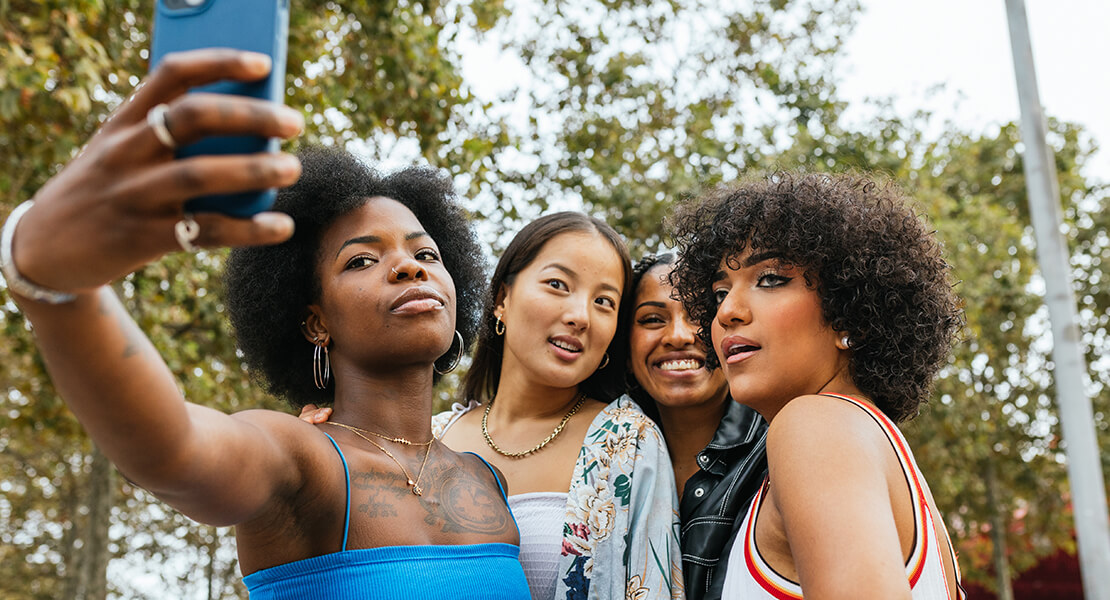
In the fast-moving world of digital content, there’s one shift that’s impossible to ignore: the rise of vertical videos. Not long ago, landscape (horizontal) video was considered the gold standard. From YouTube to TV, the idea of filming vertically seemed… wrong. It was dismissed as amateurish, something you’d only see by accident when someone forgot to rotate their phone. But times have changed—and if you’re not already adapting, it’s time to ask yourself: Are you ready for the vertical video revolution?
This transformation didn’t happen overnight. It crept up alongside the evolution of mobile-first behaviour. As our lives became increasingly digital, the devices in our hands began to dictate the content we consumed. What was once a screen orientation issue has now become a full-blown format shift, driven by user habits and platform algorithms alike. Vertical video is no longer a quirk. It’s a requirement.
And here’s the truth: the brands, creators, and marketers who understand this shift are already seeing the benefits. Better engagement. Higher retention. Wider reach. While those clinging to outdated formats risk losing visibility in an increasingly mobile-first world.
Vertical videos are no longer just an option—they’re becoming the default. Whether you’re a content creator building a personal brand, a small business owner looking to connect with customers, or a global brand adapting to audience expectations, ignoring this format could mean falling behind. So let’s unpack why vertical video has become such a powerful force, how it’s transforming storytelling, and what you need to do to keep up—and get ahead.
Why Vertical Video, and Why Now?
This change has everything to do with how we use our devices. Let’s face it: we live on our phones. From morning alarms to late-night scrolling, the smartphone is our constant companion. We scroll vertically, hold our devices upright, and consume more video content than ever before—on the train, in the queue for coffee, during lunch breaks, or as a distraction between tasks. And when we do, we expect the experience to feel natural and immersive. That means full-screen, no black bars, no awkward rotation. That means vertical video.
It’s not just about convenience—it’s about behavioural alignment. Vertical video fits how we live. Platforms like Snapchat and Instagram Stories were among the first to capitalise on this, offering content in a format that simply made sense for users. TikTok took it further and rewrote the rules altogether. Now, vertical-first platforms are leading the pack, setting expectations for what content should look and feel like on mobile.
At first, vertical video was seen as a compromise. A less “professional” choice. But fast forward to now, and it’s the dominant format driving engagement across nearly every major platform. Audiences engage more with videos that match the way they naturally hold their devices—and where audiences go, algorithms (and ultimately brands) follow.
In fact, more than 80% of social media usage now takes place on mobile. Video consumption continues to rise, especially on short-form platforms. Vertical isn’t just easier—it’s smarter. It’s efficient, immersive, and perfectly tailored to the way we consume content today. In short, it’s no longer a passing trend. It’s the new normal—and it’s only just getting started.
How Vertical Videos Are Shaping Content Creation

The vertical format isn’t just a technical change—it’s a creative one too. It forces you to reimagine how stories are told, how visuals are framed, and how you hold a viewer’s attention.
Rather than thinking wide, you have to think tall. This narrower frame demands smart composition—close-ups, tight angles, bold text overlays, and centre-focused visuals. Far from limiting you, it pushes you to be more inventive. You’ve got fewer pixels to play with, so every one counts.
Vertical video also feels more personal. It fills the screen in a way that’s immersive, almost like a FaceTime call. That intimacy helps draw people in—it’s as if the viewer is part of the moment, rather than simply watching from a distance.
And because it’s made for short-form platforms, vertical video lends itself to fast-paced, high-impact storytelling. You need to grab attention within the first few seconds—and with vertical, you’re already closer to your viewer, both visually and emotionally.
But there’s more to it. The constraints of the vertical frame actually encourage stronger narrative focus. You can’t rely on wide, sweeping establishing shots or complex background details—they simply don’t work the same way. Instead, you’re pushed to highlight expressions, gestures, product features, or actions right in the centre of the screen. This leads to more deliberate storytelling decisions and more direct communication.
It also helps create a sense of immediacy. Whether you’re filming a tutorial, an announcement, or a quick behind-the-scenes moment, vertical video makes it feel like you’re talking to the viewer one-on-one. In a world full of polished, distant content, this directness is what stands out—and builds trust.
Vertical video isn’t a downgrade from widescreen—it’s a different way of connecting. And it’s proving to be incredibly effective.
The Platforms Fueling the Vertical Boom

Let’s look at the major platforms that have championed the vertical video wave:
TikTok
The platform that
changed everything. TikTok built its empire on vertical, short-form video and
its success has inspired every other platform to follow suit. Its full-screen,
swipeable feed makes it easy for users to binge hours of content—without ever
turning their phone sideways.
TikTok’s algorithm is famously good at surfacing relevant content, giving
creators massive exposure with minimal effort. Trends, music, and editing
styles often originate here before spreading across the rest of the internet.
Brands are also increasingly using TikTok to launch products, raise awareness,
and build community—all through vertical video. It’s become a cultural engine
powered by short, vertical bursts of creativity.
Even niche creators can find huge audiences if their content resonates. The
platform rewards originality, consistency, and authentic storytelling over big
production budgets. For many users, TikTok is now the go-to source for
entertainment, information, and discovery—all delivered in vertical video form.
Instagram Reels & Stories
Instagram quickly
adapted to the TikTok threat by doubling down on Reels and Stories. Both are
inherently vertical and highly discoverable. If you’re not creating vertically
for Instagram in 2025, you’re missing a huge opportunity for reach and
relevance.
Reels now appear in the main feed, on profile grids, and in their own dedicated
tab, giving vertical content even more visibility. Stories, meanwhile, offer
time-sensitive engagement perfect for behind-the-scenes updates, polls, and
promotions. Instagram also integrates shopping features into Stories and Reels,
making it easy for viewers to buy directly from the video. With Meta’s ongoing
investment in video, vertical is clearly at the core of Instagram’s future
strategy.
Reels also benefit from cross-posting options with Facebook, helping brands
maximise reach across Meta’s ecosystem. Interactive elements—like stickers,
questions, and countdowns—turn Stories into two-way conversations rather than
passive viewing. For creators and businesses alike, vertical video is no longer
a side format—it’s the main stage on Instagram.
Snapchat
Snapchat was one of
the early adopters of vertical video. Its original Discover feature trained
users to expect full-screen video experiences, setting the stage for what would
become the norm across other platforms.
Snapchat pioneered the “tap-through” experience, influencing how we now engage
with Stories across platforms. The app continues to innovate with
vertical-first augmented reality (AR) lenses and interactive video ads. Its
younger demographic is highly engaged, making it an ideal testing ground for
experimental vertical content. Brands that embrace Snapchat’s fast, informal
style often see higher engagement and authentic user interaction.
Snapchat also offers robust analytics tools that help creators fine-tune
content performance in real time. As the platform continues to evolve, its
commitment to vertical-first design ensures it remains a valuable space for
brands targeting Gen Z and Millennial audiences.
YouTube Shorts
Even YouTube—once the
stronghold of widescreen content—now embraces vertical. Shorts are optimised
for mobile viewing and have become one of the fastest-growing content types on
the platform. Vertical is no longer the side act—it’s centre stage.
YouTube has begun pushing Shorts heavily in the homepage feed, subscriptions,
and even in search results. Monetisation tools are also being rolled out,
giving creators financial incentive to invest in vertical formats. The Shorts
interface encourages constant scrolling, making it ideal for discovery and
virality. For creators already established on YouTube, Shorts provide a
powerful way to repurpose long-form content into vertical snippets.
They also offer an easy entry point for new creators looking to grow quickly
without producing lengthy videos. With YouTube’s robust search engine and
global reach, Shorts have the potential to go viral faster than traditional
uploads.
Why Vertical Video Matters for Your Marketing Strategy
Whether you’re selling a product, promoting a service, or building a personal brand, vertical video isn’t just a nice-to-have. It’s a must.
More Engagement
Vertical
videos are naturally more engaging on mobile. They fill the screen, leaving no
room for distractions. That full-screen focus translates into longer watch
times and stronger viewer retention. With attention spans shrinking, every
second counts—and vertical video helps you make the most of each one. It
creates an immersive viewing experience that feels direct and immediate.
This increased engagement also leads to higher interaction rates, including
likes, shares, and comments. When your content feels more personal and visually
focused, viewers are more likely to respond and connect.
Higher Conversion Rates
Vertical
content performs exceptionally well in ad formats. Think Instagram Story ads,
TikTok sponsored posts, or shoppable videos. With in-app purchasing now more
streamlined than ever, vertical video allows users to go from interest to
action in just a few taps. It shortens the sales journey and keeps users
in-app, reducing drop-off points. That convenience translates into measurable
results for businesses of all sizes.
Studies show that vertical video ads often outperform horizontal ones in
click-through rates, especially when they’re designed with mobile-first
storytelling in mind. The format gives your call-to-action better visibility
and reduces friction in the user journey.
Better Algorithm Reach
Social
algorithms favour content that keeps people watching. Because vertical videos
are better suited to how people browse on mobile, they’re more likely to be
surfaced, shared, and promoted by the platform. Vertical-first formats signal
to platforms that your content is optimised for mobile—boosting your
discoverability. Plus, features like Reels, Shorts, and Stories are all
algorithmically prioritised, making vertical video a strategic must.
Algorithms also reward consistency, so regularly posting vertical content
increases your chances of being seen by new viewers. It’s not just about
format—it’s about showing the platform you understand its ecosystem and how
users engage with content.
More Authenticity
Vertical feels real.
It mimics how we record and share everyday moments. Brands that embrace this
tone—less polished, more personal—tend to build stronger trust and better
relationships with their audiences. It shows your brand isn’t just shouting at
people, but speaking with them. That sense of intimacy is exactly what
audiences crave in a crowded content landscape.
Viewers are drawn to content that feels spontaneous and relatable rather than
overly produced. Vertical video allows you to strip away unnecessary gloss and
focus on genuine expression. This rawness doesn’t weaken your brand—it
humanises it, and that builds loyalty.
How to Start Creating Vertical Video Content

If you’re new to vertical video, don’t panic. You don’t need a Hollywood setup to get started. In fact, simplicity works in your favour. Here’s how to dive in:
- Plan
your content for vertical from the start – Don’t just crop horizontal footage.
Think vertical when framing, scripting, and editing.
Vertical content requires a different mindset—it’s not just a new frame size, it’s a new way of thinking about space and storytelling. Consider how your subject will move within a tall frame and avoid relying on wide background visuals that may be lost in the crop. Build your narrative to suit short-form attention spans, focusing on punchy intros and a strong hook early on. Planning vertically from the outset saves time in post-production and ensures your content feels native on mobile-first platforms like TikTok and Instagram Reels.. - Use
bold text and central focal points
Text overlays need to be large, readable, and ideally positioned towards the centre of the screen. Many viewers watch with the sound off, so captions and text are crucial for conveying your message. Don’t rely on subtlety—make sure your call to action or main point is impossible to miss. Keep key visuals within the middle third of the frame so they’re always visible across different device types. This makes your content more accessible and much more effective on the go. - Shoot
with your phone
It’s quick, easy, and native to the format. Modern smartphones are more than capable of capturing high-quality video, especially for social media use. Shooting vertically from the outset ensures better framing and less time wasted in post-production. Use a tripod or stabiliser for smoother footage, and don’t forget good lighting—it can elevate even the simplest phone shot. Remember, audiences care more about story and relatability than flashy production. - Embrace
spontaneity
The best vertical videos often feel off-the-cuff and real. Don’t overthink it—sometimes the most engaging content is the unscripted kind. Viewers appreciate honesty, humour, and a sense of immediacy. Share moments as they happen, even if they’re a bit rough around the edges. This kind of authenticity builds trust, encourages interaction, and humanises your brand.
The beauty of vertical video is that it doesn’t need to be perfect. It needs to be relevant, relatable, and real.
So… Are You Ready?
Vertical video isn’t the future—it’s the present. It’s how people watch, how they connect, and how they buy. If you’re still creating content only for widescreen, you’re speaking in the wrong format to a mobile-first world.
The good news? It’s never been easier to adapt. With a smartphone in your pocket and platforms built for vertical at your fingertips, the tools are there. The audience is waiting. And the opportunity is massive.
Whether you’re a seasoned video producer or just starting out, embracing vertical means meeting your viewers where they already are—on their phones, scrolling through feeds designed for tall, immersive visuals. The sooner you adjust, the sooner you start seeing results: better reach, more engagement, stronger connections. And let’s be honest—this isn’t about keeping up with trends. It’s about staying relevant, accessible, and impactful in a world where attention is the ultimate currency.
The most successful brands and creators right now are the ones willing to shift gears, test new formats, and show up consistently in the spaces their audience actually lives. So don’t get stuck in landscape thinking.
Go vertical. Be bold. Get creative. Experiment. Refine. Share what matters in the format that fits the moment. And most importantly—don’t wait.
Because the question isn’t if you should create vertical videos.
It’s how fast you can start. If you’re ready to take your video production to the next level, get in touch with us at Spiel for a free strategy consultation.

